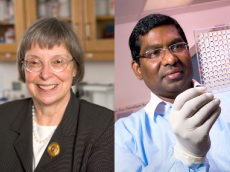Continuing from Monday’s post, IMP graduate student Taryn McLaughlin explains why the most advanced malaria vaccine is actually not that great.
Malaria has plagued humans for thousands of years. And while we have known the causative agents of the disease- for 150 years, malaria remains scientifically frustrating. In fact, one of the most common treatments for the disease is simply a derivative of a treatment used in ancient China.
One of the most frustrating features is that there is no sterilizing immunity. In other words, for many diseases once you are infected with the microbe responsible, you develop an immune response and then never get the disease again. Not so with malaria. Compounded with terrible treatment and the impracticality of ridding the world of mosquitos, a vaccine sounds like pretty much our only hope. And yet this has been scientifically challenging and unsuccessful for many many reasons.
In fact a number of vaccine candidates have come along in the last few decades that have seemed SO promising only to go on and break our hearts in clinical trials. The most recent of which is a vaccine that goes by the name RTS,S (named for the different components of the vaccine).
As a quick refresher, Plasmodium enters the body via mosquitos as a sporozoite. It then migrates through the skin going into the blood and eventually making it’s way to the liver. Here it goes inside liver cells where it replicates and turns into merozoites (such that one sporozoite becomes thousands of merozoites). This stage of the disease is asymptomatic. Some time later, all those merozoites burst out of your liver cells causing mayhem and invading your red blood cells. Here, they once again replicate and metamorphose. Fun times. Anyways, during the last stage, some of those plasmodium become gametes which get eaten by mosquitos thus completing the life cycle. Read more








